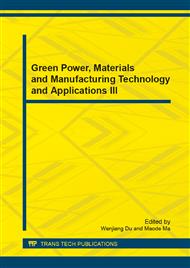p.896
p.902
p.907
p.912
p.916
p.922
p.927
p.933
p.938
Multiple Features Fusion Based on PCA in Liver CT Image Recognition
Abstract:
The contribution of various features for image recognition is different. In order to comprehensively and complementarily express the contents of liver CT image, a method of multiple features fusion based on PCA (Principal Component Analysis) is proposed in this paper. First, the features of each medical image include color, texture and shape are extracted, which constitute a feature vector that can represent the image. Then, for the wide gap of the value among the features, the features are standardized. Finally, the method of PCA is used to fuse the standardized features which can reduce the dimension and eliminate the redundant information among the features. The results through the recognition based on SVM (Support Vector Machine) proves that the fused features can express the contents of the liver CT image better and a higher recognition rate can be got in the image recognition.
Info:
Periodical:
Pages:
916-921
Citation:
Online since:
January 2014
Authors:
Price:
Сopyright:
© 2014 Trans Tech Publications Ltd. All Rights Reserved
Share:
Citation:


